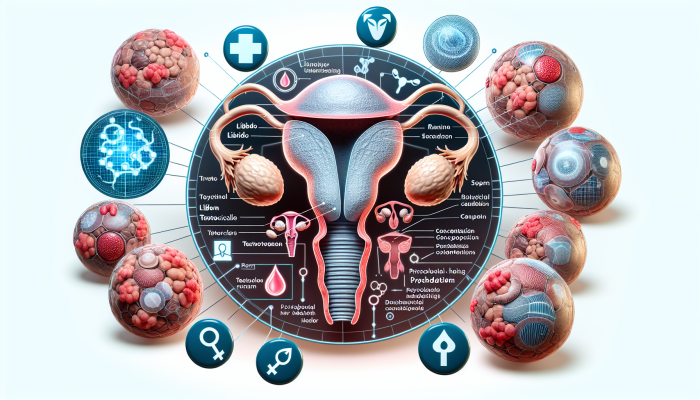Comprehensive Understanding of Testosterone Testing Standards to Enhance Your Health
Testosterone is a pivotal hormone considered fundamental to hormonal health for all genders. This steroid hormone plays a crucial role in driving muscle growth, stimulating sexual desire, sustaining bone density, and fostering emotional stability. Achieving an optimal balance of testosterone levels can dramatically enhance one's quality of life, impacting aspects such as energy levels, mood stability, and cognitive function. Therefore, a thorough grasp of testosterone testing standards is essential for pinpointing hormonal imbalances and enhancing overall wellness.
Understanding the Crucial Role of Testosterone in Comprehensive Health

Testosterone is predominantly synthesized in the testicles for men, while women produce it in smaller amounts in the ovaries. Though this hormone is often associated with male traits such as muscle mass and body hair, it is equally vital for numerous bodily functions in women. Fluctuations in testosterone levels can greatly affect libido, sperm production, and cognitive clarity. Inadequate testosterone levels can lead to serious health issues, including depression, chronic fatigue, and reduced sexual function.
Additionally, the influence of testosterone extends to mental health. Research suggests that maintaining healthy testosterone levels can foster improved moods and enhance resilience to stress. This highlights the necessity of regular monitoring and awareness of your testosterone levels, especially when you observe shifts in your emotional or psychological well-being.
Critical Insights into How Testosterone Testing Standards Are Developed
The testosterone testing standards are developed through extensive clinical studies involving healthy subjects. These investigations take into account various elements, including age, sex, and the timing of tests. Naturally, testosterone levels fluctuate throughout the day, typically peaking in the morning hours. Consequently, laboratories adjust their standards to accommodate these natural variations.
It is important to recognize that reference ranges can differ between laboratories due to variations in testing methodologies and the demographic characteristics of the populations used in the studies. Thus, what is classified as “normal” in one lab might not align with another. This variability underscores the importance of consulting with a healthcare provider for a precise interpretation of your results, considering your specific health circumstances.
Identifying Key Factors That Cause Variations in Testosterone Testing Standards Across Laboratories
Variations in testosterone testing standards among laboratories can arise from multiple factors. Each laboratory may utilize its own testing methods, which can differ in terms of precision and sensitivity. For example, some labs might employ immunoassays, while others may utilize advanced techniques like liquid chromatography. Such differences can result in disparate test outcomes.
Moreover, the reference populations selected to establish these standards can significantly affect the resulting values. If a laboratory predominantly tests individuals from a specific age group or ethnic background, its norms may not accurately depict the broader population. Therefore, obtaining results from a reputable laboratory and engaging with a healthcare provider is crucial for comprehending your results in the context of your medical history.
Decoding Your Testosterone Testing Results for Better Health Management

Interpreting the results of a testosterone test may initially seem overwhelming; however, it can become manageable once you familiarize yourself with the established standards and their significance. Generally, testosterone test results are reported in nanograms per deciliter (ng/dL), with variations influenced by factors such as age and sex.
Your Step-by-Step Guide to Effectively Understanding Testosterone Test Results
The first step in assessing your testosterone test results is to compare them against the testosterone testing standards. Typically, testosterone levels for men range from 300 to 1,000 ng/dL, while women's levels usually fall between 15 and 70 ng/dL. If your results lie outside these established ranges, further exploration may be necessary to determine the root causes.
It’s essential to keep in mind that test results should be analyzed within the context of your overall health. A testosterone level that appears low for one individual may be completely normal for another, depending on personal factors such as age and overall health status. Consulting a healthcare professional allows you to evaluate your results in relation to your complete health profile and decide whether further testing or interventions are required.
Understanding the Health Implications of Low Testosterone Levels
Low testosterone levels, medically termed hypogonadism, can lead to a variety of serious health consequences. Common symptoms include a noticeable reduction in libido, chronic fatigue, loss of muscle mass, and fluctuations in mood. If you are experiencing any of these symptoms, it is advisable to consider undergoing a testosterone test to determine whether your levels fall below the normal range.
The causes of low testosterone can be diverse, ranging from medical conditions to lifestyle factors. Disorders such as diabetes, obesity, or conditions impacting the pituitary gland can hinder testosterone production. Additionally, environmental factors, including exposure to harmful chemicals or endocrine disruptors, may also contribute to low testosterone levels. A comprehensive medical evaluation is vital to identify the underlying cause accurately and formulate effective treatment strategies.
The Risks Associated with Elevated Testosterone Levels

On the flip side, excessively high testosterone levels can also pose health risks. Abnormally elevated testosterone levels may be associated with medical conditions such as testicular tumors or the misuse of anabolic steroids. Symptoms linked to high testosterone may include acne outbreaks, hypertension, and mood changes, including increased aggression.
It is crucial to avoid jumping to conclusions based solely on elevated test results. Engaging in a thorough discussion with a healthcare professional is necessary to evaluate the findings comprehensively and consider additional testing to uncover the underlying factors. Discussing potential risks associated with high testosterone levels is equally important, as these may include cardiovascular complications and other adverse effects.
Key Factors Influencing Testosterone Levels: Insights for Optimized Health
Testosterone levels are dynamic and can be influenced by a multitude of factors. Understanding these influences empowers you to make informed choices regarding your hormonal health.
The Impact of Aging on Testosterone Levels
Age plays a critical role in determining testosterone testing standards. Research has consistently shown that testosterone levels in men begin to gradually decline around the age of 30. This decline, although typically slow, can have significant long-term implications for both physical and mental health.
Women, despite generally exhibiting lower testosterone levels, also experience a decline as they age, particularly after menopause. This reduction can lead to symptoms such as fatigue, decreased libido, and mood swings. Therefore, it is essential for individuals of all genders to monitor their testosterone levels as they grow older and seek medical guidance if any signs of hypogonadism arise.
The Influence of Lifestyle Choices on Testosterone Levels
Your lifestyle choices significantly impact the maintenance of optimal testosterone levels. Engaging in healthful practices, such as consuming a balanced diet, exercising regularly, and ensuring adequate sleep, can greatly support optimal hormonal levels. Research has shown that physical activity, particularly strength training, can stimulate testosterone production.
Conversely, risk factors like obesity, inactivity, and chronic stress can disrupt hormonal balance. Elevated stress levels, in particular, can increase cortisol levels, a hormone that adversely affects testosterone production. By incorporating stress-reducing techniques such as meditation or yoga and leading an active lifestyle, you can significantly enhance your hormonal health.
The Effects of Medications and Supplements on Testosterone Levels
Certain medications can significantly impact testosterone levels. Corticosteroids, opioids, and specific antidepressants might lead to decreased testosterone production. If you are taking medication and have concerns about your testosterone levels, discussing this with your healthcare provider is advisable.
On the other hand, certain supplements that claim to boost testosterone levels, such as zinc and vitamin D, might provide benefits, especially for those with deficiencies. However, it is essential to consult with a healthcare professional before starting any supplementation. A well-rounded approach focusing on a nutritious diet and an active lifestyle often serves as the most effective strategy for maintaining optimal hormonal levels.
Recognizing Symptoms and Diagnostic Approaches for Abnormal Testosterone Levels
Identifying symptoms associated with abnormal testosterone levels is crucial for early detection and timely interventions. This typically involves thorough physical examinations and laboratory tests.
Recognizing Common Symptoms of Low Testosterone Levels
Symptoms associated with low testosterone levels can vary from person to person, but certain common signs may indicate a hormonal imbalance. Persistent fatigue is frequently cited as one of the most significant symptoms. If you notice a decline in your energy that seems disproportionate to other factors, it could be a warning signal.
A decrease in libido is another notable indicator. Men may struggle to achieve or maintain an erection, while women might notice a reduced interest in sexual activities. Furthermore, loss of muscle mass, weight gain, and mood fluctuations, such as anxiety or depression, can also be associated with low testosterone levels.
When to Consult a Healthcare Professional for Testosterone Testing
It is important to seek the advice of a healthcare professional if you are experiencing persistent symptoms or have specific concerns regarding your testosterone levels. Early evaluation can be instrumental in identifying potential underlying health issues and developing a suitable action plan.
If you are a man over 40 or a woman undergoing menopause, it may be particularly wise to discuss testosterone testing with your physician, even if you do not exhibit symptoms. Regular screenings can help monitor your testosterone levels and facilitate informed health decisions.
The Diagnostic Process for Evaluating Testosterone Levels
The diagnostic procedure for assessing testosterone levels typically begins with a medical consultation, during which your symptoms and medical history are comprehensively reviewed. If your doctor suspects a hormonal imbalance, they may recommend a blood test to measure your testosterone levels.
Testing is generally performed in the morning when testosterone levels are at their highest. Should abnormal results be identified, additional tests may be necessary to ascertain the underlying cause. This might include evaluations of pituitary function or further hormonal assessments. Accurate diagnosis is essential for developing an effective treatment plan.
Effective Treatment Options for Addressing Abnormal Testosterone Levels
Upon identifying abnormal testosterone levels, various treatment alternatives may be available. The choice of treatment often hinges on the underlying cause and personal preferences.
Proven Strategies for Managing Low Testosterone Levels
Managing low testosterone levels may involve testosterone replacement therapy (TRT), which aims to restore normal hormonal levels. TRT can be delivered through several methods, including injections, gels, or transdermal patches. This therapy can effectively mitigate symptoms associated with hypogonadism, such as fatigue, reduced libido, and diminished muscle strength.
However, discussing the potential risks and benefits of TRT with your healthcare provider is paramount. While many patients find relief from symptoms, there are associated risks, including cardiovascular complications and possible side effects. Regular monitoring of hormonal levels is often necessary to ensure the safety and effectiveness of the treatment.
Natural Approaches to Elevate Testosterone Levels
For individuals preferring to avoid hormonal treatments, several natural methods can help raise testosterone levels. Maintaining a healthy lifestyle characterized by a balanced, nutrient-dense diet is paramount. Foods rich in zinc, vitamin D, and omega-3 fatty acids can positively influence testosterone production.
Incorporating physical exercise, especially resistance training, is another excellent approach to stimulate testosterone. Additionally, engaging in stress management techniques like meditation, yoga, or enjoying leisure activities can help reduce cortisol levels, thereby supporting optimal hormonal balance.
Evaluating the Benefits and Risks of Testosterone Replacement Therapy
Testosterone replacement therapy can provide numerous advantages, including improved libido, enhanced mood, and increased muscle mass. Nonetheless, it also presents potential risks, such as an increased risk of cardiovascular disease, sleep apnea, and prostate complications.
Therefore, carefully weighing the benefits and risks of TRT is essential. A thorough discussion with a healthcare professional is crucial in determining whether this treatment aligns with your health objectives. Regular follow-up consultations are also necessary to monitor treatment effects and make any required adjustments to the therapy.
The Profound Impact of Testosterone Levels on Holistic Health
Testosterone levels significantly influence various health aspects, including mental health, bone strength, and cardiovascular wellness. Understanding these connections can help you manage your overall well-being more effectively.
The Influence of Testosterone Levels on Mental Health
Research indicates a strong correlation between testosterone levels and mental health. Low testosterone levels are frequently linked to mood disorders such as depression and anxiety. Individuals with sufficient testosterone levels often exhibit enhanced emotional resilience and overall quality of life.
Importantly, addressing hypogonadism may lead to positive mental health outcomes. Many patients report improvements in mood and a decrease in depressive symptoms following the restoration of normal hormonal levels. This underscores the importance of monitoring testosterone levels, particularly in the context of mental health challenges.
The Essential Role of Testosterone in Promoting Bone Health
Testosterone is vital for maintaining bone health, contributing to bone density and reducing the risk of osteoporosis. Adequate testosterone levels are necessary for preserving bone mass and minimizing fracture risk, particularly in older adults, as declining testosterone levels can lead to increased bone fragility.
Studies suggest that testosterone replacement therapy may also positively affect bone density in both men and women with hypogonadism. Therefore, monitoring testosterone levels and considering appropriate treatment options is crucial for safeguarding optimal bone health.
The Relationship Between Testosterone Levels and Cardiovascular Wellness
The relationship between testosterone levels and cardiovascular health is intricate. Balanced testosterone levels can enhance heart health by influencing lipid metabolism and supporting vascular function. However, excessively high testosterone levels, often associated with steroid abuse, may elevate the risk of cardiovascular diseases.
Achieving a healthy hormonal balance is essential. Regular monitoring of your testosterone levels and consultations with a healthcare provider can help you navigate these health challenges and maintain optimal cardiovascular health.
Proactive Steps for Monitoring and Testing Testosterone Levels: Essential Guidelines
Taking proactive steps to prepare for a testosterone test and monitor your testosterone levels is essential for maintaining optimal hormonal health. Here are several recommendations to assist you throughout this process.
Best Practices for Preparing for a Testosterone Test
Proper preparation for a testosterone test is crucial for ensuring accurate results. It is advisable to refrain from intense exercise, alcohol consumption, and certain medications, including corticosteroids, at least 24 hours before the test. Typically, tests are performed in the morning when testosterone levels are naturally higher to yield more reliable results.
Discussing any questions or concerns with your physician prior to the test is also vital. Adequate preparation can significantly influence the accuracy of your results and enhance your understanding of your hormonal health.
Determining the Appropriate Frequency for Testosterone Testing
The recommended frequency for testosterone testing is generally guided by symptoms and medical advice. For men over 40, annual testing may be prudent, especially if there are concerns regarding low testosterone levels. For individuals undergoing treatment or exhibiting symptoms, more frequent testing may be necessary to monitor testosterone levels and adjust treatment plans as needed.
Maintaining open communication with your healthcare provider is essential in establishing a testing frequency that aligns with your individual health needs.
The Importance of Ongoing Monitoring of Testosterone Levels
Consistent monitoring of testosterone levels enables the evaluation of treatment effectiveness and the identification of changes in your hormonal health. This is particularly crucial for those receiving testosterone replacement therapy, as adjustments may be required over time.
By diligently tracking your testosterone levels, you can collaborate closely with your healthcare provider to optimize treatment and ensure a healthy hormonal balance. This proactive approach can enhance your overall health and help prevent potential health complications in the future.
Common Questions About Testosterone Testing Standards Answered
Do testosterone levels vary throughout the day?
Yes, testosterone levels naturally fluctuate during the day, typically peaking in the morning hours.
What symptoms indicate low testosterone levels?
Common symptoms include persistent fatigue, decreased libido, mood changes, and loss of muscle mass.
How do testosterone levels affect mental health?
Low testosterone levels can contribute to mental health issues, including depression and anxiety.
When should I consult a healthcare provider for testosterone testing?
Consult a physician if you experience ongoing symptoms or have concerns regarding your testosterone levels.
What treatment options are available for low testosterone levels?
Available options include testosterone replacement therapy, lifestyle modifications, and natural remedies.
Is testosterone replacement therapy a safe choice?
While beneficial for many, testosterone replacement therapy carries potential risks, including cardiovascular complications.
Can supplements assist in increasing testosterone levels?
Certain supplements may help, but it is important to consult a healthcare professional before using them.
What is the normal testosterone range for men?
Normal testosterone levels in men typically range from 300 to 1,000 ng/dL.
Should women consider undergoing testosterone testing?
Yes, women can also benefit from testosterone testing, particularly if they exhibit signs of hormonal imbalance.
What is the recommended frequency for testosterone testing?
The frequency of testing is contingent on symptoms and medical history; however, annual testing may be appropriate for men over 40.
Connect with us on Facebook!
This article was originally published on https://bloodtest.co.uk
The Article: Testosterone Testing Standards: Your Ultimate Guide appeared first on: https://ezbloodtest.com
The Article Testosterone Testing Standards: Essential Guide for You Was Found On https://limitsofstrategy.com


I really appreciate the emphasis you’re placing on the importance of understanding testosterone levels. It’s fascinating how much this hormone influences various aspects of our health beyond just physical traits. I’ve personally noticed how hormonal imbalances can affect not just energy but also mood and motivation. For instance, I started tracking my symptoms and realized that fluctuations can often align with lifestyle changes or stress levels.
It’s great to hear how you’re connecting the dots with your own experiences. Hormones can really pull some surprising strings in our lives, can’t they? It’s like when you start paying attention to how different factors play into your mood and energy, everything just starts to make more sense.
I completely agree—it’s fascinating how hormones can influence so many aspects of our lives. I’ve noticed shifts in my mood and energy levels tied to changes in my routine, diet, or even stress levels. It’s almost like a subtle dance where each factor plays its part, sometimes in ways we don’t immediately recognize.
I completely relate to what you’re saying about that subtle dance of hormones and their influence on our daily lives. It’s interesting how interconnected everything is—like when I go through a period of intense stress, I can almost immediately notice shifts in my energy and mood, too.
I hear you. It’s wild how quickly our bodies respond to stress, isn’t it? One moment you’re feeling fine, and the next it’s like you’ve flipped a switch. I’ve noticed that when I’m stressed, even my appetite takes a hit. Our hormones really are like a conductor leading an orchestra; they impact much more than just our mood. It’s all connected—stress can lead to fatigue, which in turn messes with how we handle our day-to-day. Have you found any tricks for managing those hormonal shifts? I’ve started keeping a journal about my mood and energy levels, and it’s revealing patterns I never noticed before. Would love to hear your thoughts.
It’s interesting how you mention the subtle dance of hormones and various life factors. It’s true—our bodies can be incredibly sensitive to changes that seem minor on the surface. For instance, stress can trigger the release of cortisol, which not only affects mood but also influences physical health in profound ways.
Your observation about the interplay between hormones and daily experiences is worth diving into a little deeper. There’s something almost poetic about how our lives can shift in subtle, unexpected ways due to these biochemical messengers. It’s fascinating that the things we often take for granted—like sleep, what we eat, or how we handle stress—can trigger hormonal responses that impact our mood and energy in significant ways.
It’s great to hear that you’re tracking your symptoms; that’s a powerful way to connect the dots. Hormonal imbalances, particularly with testosterone, can really shape how we feel on so many levels. It’s interesting how these fluctuations can mirror our daily lives—stress, diet, sleep—they all play a role.
It’s comforting to see others recognize the complexity of hormonal imbalances and their impact on our day-to-day lives. Tracking symptoms can feel a bit tedious at times, but it can also be enlightening—like piecing together a puzzle where every small detail matters. The connection between our hormones and how we feel isn’t just scientific; it’s personal and deeply intertwined with our experiences.
It’s great to hear your thoughts on the impact of testosterone levels on overall health. You’ve touched on something really important—how interconnected our hormones are with everyday feelings and experiences. Many people overlook testosterone, focusing more on its physical aspects, but as you’ve experienced, it plays a significant role in energy, mood, and motivation too.
“I’m glad to hear you found the insights helpful! If you’re interested in exploring how to better manage hormonal health, I have some resources that might offer further support.”
https://cambridgecomhaltas.com/trustindex
You’ve really captured the essence of the conversation around testosterone and its broader implications on our daily lives. It’s fascinating how easily we can tie our emotional and mental states to our hormonal balance. Many people get caught up in the physical aspects of testosterone—like muscle growth or libido—while the subtler influences on energy and mood often go unnoticed.
“I’m really glad you found it valuable! If you’re looking to dive deeper into managing hormonal health, check out these resources that could be really helpful.”
https://cambridgecomhaltas.com/emailoctopus
You’ve touched on an essential point about the dynamics of hormonal balance and how it can permeate every aspect of our lives. So often, we think of testosterone in the context of muscle growth or physical endurance, but its role in our mood, motivation, and overall well-being is equally significant—something many people overlook.